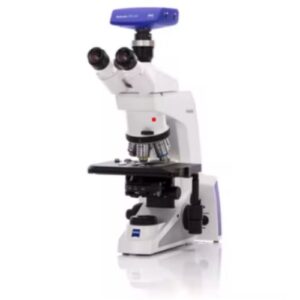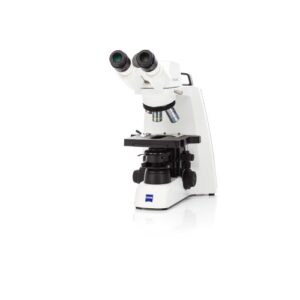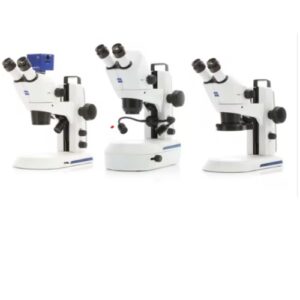Since the days of Antonie van Leeuwenhoek and his custom microscopes, the most exquisite detector was used for critical observations – the human eye. The human eye was critical for describing the first microorganisms, but also, as the story goes, the quality of the thread he was using for his textile business. The eye was able to open the door to unknown areas of science, albeit with the help of glass lenses.
Today, the eye is still a critical part of every scientific advancement based on an image. Whether the image is generated by a stereo microscope, compound microscope, electron microscope, or the Hubble Space Telescope – the eye is the final destination for the data generated by these systems.
So, naturally, the eye is the final calculation for total magnification in a microscope system. For over 160 years, Leica has been calculating total magnification by multiplying the magnification of the objective lens, intermediate lens, and eyepiece lens. For instance, a 20X microscope lens, without an intermediate magnification lens, and 10X eyepieces, would have a total magnification of 200X.
Although the traditional “total magnification calculation” still applies in optical systems that include eyepieces, the math changes when a camera is used for total magnification. If I had a dollar for every engineer that asked me, “What is the total magnification of the camera,” I would probably have about 15 or 20 bucks. Don’t laugh, in the microscope world, 15-20 are a lot of people asking the same question! The answer every time is “I don’t know.” There are too many sensors available with different pixel sizes, length, and width measurements. Pair these variables with objective lenses, intermediate lenses, and the lenses in the camera coupler and it’s enough to befuddle even the most talented engineer.
When a camera is included in the total magnification equation, it is the monitor, not the camera that dictates the magnification. Even with a camera, the monitor, and ultimately the eye is the final calculation for total magnification. In systems where the monitor has a variable size, the magnification is calculated based on the viewable area of the live or captured image. For example, the magnification is less on a 17-inch monitor compared to a 30-inch monitor. With this in mind, a digital microscope, without eyepieces, and a 30-inch monitor has a greater magnification than the same digital microscope with a 17-inch monitor.
Commence “fun with numbers”.
This numbers game goes a step further when digital zoom is incorporated into the equation. When a 10-megapixel sensor is “zoomed” to only include a center region of 2.5 megapixels, the magnification is tripled. What if the digital zoom goes all the way to a region of 16 pixels squared, is that really magnification? Most reasonable people would answer “no.” However, on a spec sheet, that digital microscope has magnification that exceeds an electron microscope! Put it on a 60-inch 4K television and the numbers become even more outlandish.
Is the scenario described above actually happening in the marketplace? The simple answer is no, but it could, which is why an ISO standard for digital microscopes is being developed to standardize digital microscopes. ISO/DIS 18221 is being developed by an international committee to put a stop to the digital microscope hijinks.
In reference to ISO 18221: This International Standard specifies the minimum information to be provided to the user by manufacturers of microscopes with digital displays, regarding imaging performance. It further specifies terms and definitions for describing the optical performance of the digital imaging path of microscopy systems including the observation of the image on digital displays.
NOTE: Terms and definitions for the direct visual observation with eyepieces are specified in ISO 8039 and ISO 10934-1.
More information on the new digital microscope ISO standard can be reviewed at the ISO website:
https://www.iso.org/obp/ui/#iso:std:iso:18221:dis:ed-1:v1:en
http://www.iso.org/iso/catalogue_detail.htm?csnumber=61810
In short, the draft standard is designed to account for more than magnification, but also consider field of view and resolution (line pairs per millimeter). The flagship digital microscope from Leica Microsystems, the DVM6, was designed with these draft standards in mind. Although these standards are only in draft status, the Leica DVM6 already meets these standards.
Those in the market for a digital microscope should seriously consider these standards when evaluating digital microscopes. Will your digital microscope stack up well to the new ISO 18221 standards? The data from the Leica DVM6 is ready for the future – will yours?




